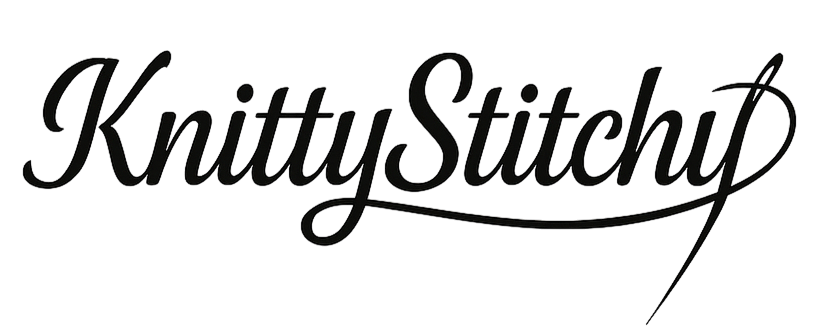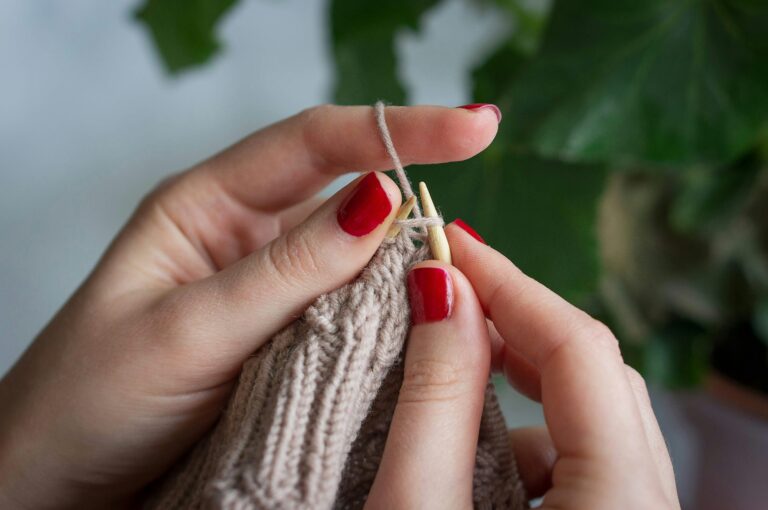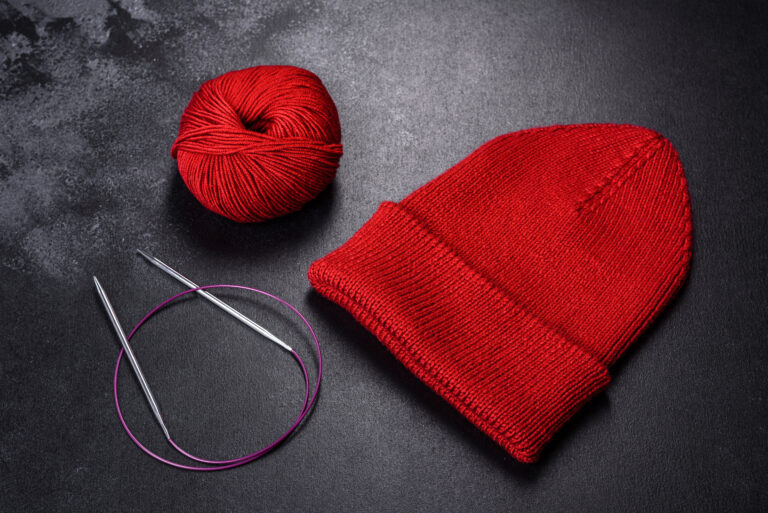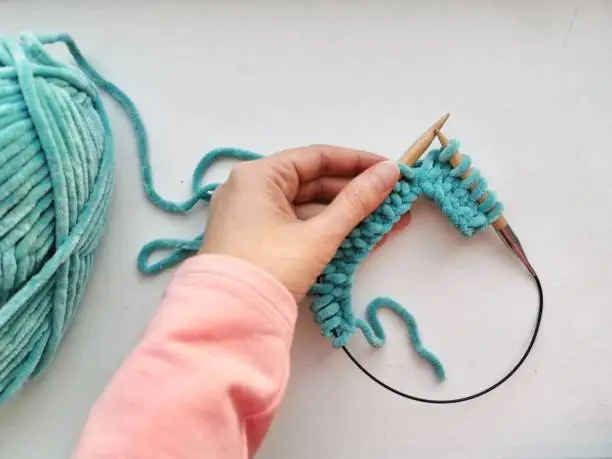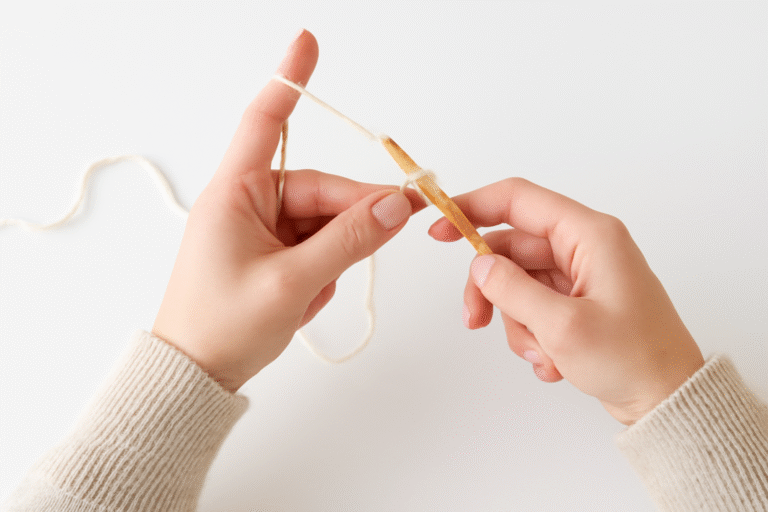Does Knit or Crochet Use More Yarn? The Simple Solution
Knitting generally uses less yarn than crochet because its flat, closely interlocked stitches create a lighter fabric. In contrast, crochet often requires 25% to 33% more yarn, as its thicker, denser stitches result in heavier material. Crochet stitches are taller and denser, while knitting forms flatter loops that create lightweight fabrics. Both crafts use similar materials but differ in stitch method.
Crochet uses one hook to pull loops through other loops, creating a stitch one loop at a time. Knitting uses two needles to hold multiple open stitches, which are worked in sequence. Crochet’s taller stitches require more yarn, providing warmth, structure, and durability—qualities ideal for blankets, accessories, and decorative items.
Also Read: How to Cast on Knitting with Two Needles: A Complete Guide
Does Knit or Crochet Use More Yarn?
In knitting, multiple active stitches on the needles form a compact, lightweight fabric. Each loop pulls through the previous one horizontally, conserving yarn. Crochet forms each stitch individually by looping vertically, which adds height and bulk while naturally using more yarn.
A medium-weight knitted blanket may need 1,200 yards of yarn, while a crocheted version of the same size might require 1,500–1,600 yards. Stitch type also matters: textured crochet stitches like puff or post designs use more yarn than open lacework, and cable or brioche knitting slightly increases yarn use compared to stockinette or garter stitch.
In essence, knitting is more yarn-efficient and lightweight, while crochet offers structure and warmth. This distinction helps crafters choose the appropriate technique.
How Much More Yarn Does Crochet Use Than Knitting?

How yarn moves through stitches sets knitting and crochet apart, influencing their look and fiber use. Knitting holds loops on needles, forming smooth, interlocking V-shapes. These rest close, making a lighter, softer fabric. This compactness means knitting often needs less yarn for the same area. Crochet builds each stitch before starting another, using a hook to draw loops.
This adds height and texture for thicker fabric, using more yarn—so crochet often requires more material than knitting, even with similar yarn. Practical tests highlight the contrast. A stockinette knitted sample may stretch to about 3.03 square inches per gram of yarn, while a single crochet swatch covers around 1.89 square inches with the same amount.
The results show that crochet often consumes roughly 25–30% more yarn. Though this may seem less efficient, the density brings strength, warmth, and visual character—qualities highly valued in home décor and accessory projects. Knitting excels at creating flexible, lightweight garments—such as scarves, sweaters, and socks—with excellent drape.
Choosing between methods depends on the project’s goal: whether it is a soft, wearable texture or sturdy, structured items such as rugs or totes. Each craft strikes a balance between efficiency, form, and artistic appeal.
Also Read: How to Count Rows in Knitting: A Complete Guide
Why Crochet Uses More Yarn Than Knitting
Yarn usage in knitting and crochet varies according to several factors, including stitch type, tension, yarn weight, and the size of the needle or hook. The nature of the stitch plays a significant role: compact, textured designs, such as bobbles or clusters, tend to consume more yarn than open, airy stitches, like lace or mesh.
The tighter the tension, the more yarn is drawn into each loop, while looser tension allows the same length of yarn to cover a greater area. Hook or needle size also influences yarn demand. Larger tools form larger stitches, creating a lighter and more flexible fabric, but often require slightly more yarn per stitch.
In contrast, smaller tools produce denser and more structured fabrics with tighter loops. Yarn characteristics, including fiber type and thickness, add further variation to the overall design. Heavier yarns are naturally consumed more quickly, while fibers with elasticity or a smooth texture may stretch further, resulting in slightly reduced total usage.
Understanding how these elements interact helps in planning projects accurately—balancing material efficiency with the desired texture, drape, and appearance of the finished piece.
Also Read: How to Change Colors While Knitting? Beginners Tips
Does Stitch Type Change How Much Yarn Is Used?

Stitch construction plays a central role in yarn consumption for both knitting and crochet. Compact stitches, such as single crochet, tend to use more yarn because they build dense, solid fabric. Taller crochet stitches, such as double crochet or treble, stretch farther with each loop, covering a larger area and using less yarn per square inch.
In knitting, garter stitch consumes slightly more yarn than stockinette, as each row forms ridges that add bulk to the fabric. Textured and decorative stitches—like cables in knitting or bobbles in crochet—naturally increase yarn demand, while lace or mesh patterns reduce it due to their open structure.
The choice of stitch, therefore, directly affects both the weight and appearance of the finished piece. Selecting stitch patterns according to project goals helps balance yarn efficiency with desired fabric style and texture.
Also Read: How to Add Stitches When Knitting: A Complete Guide
How Tension and Tool Size Affect Yarn Use
The tension directly affects the amount of yarn consumed during knitting or crocheting. Firm, closely packed stitches compress the yarn, increasing total usage, while looser tension allows each strand to stretch farther and cover a larger area. Crochet typically forms tighter stitches than knitting, contributing to its higher yarn demand in many projects.
Tool size also influences efficiency. Larger hooks or needles create open stitches and work well with lighter fabrics, sometimes reducing yarn use, while smaller tools form dense, structured textures that require more yarn. Finding the right balance between tension and tool size ensures both material efficiency and the desired look and drape of the finished piece.
Also Read: The Best Knitting Machines For Crafters
Do Yarn Weight and Fiber Type Matter?

Yarn thickness significantly affects the amount required. Bulky yarns use more per stitch than lace or fingering weights. Fiber structure also matters. Wool’s stretch allows for a softer drape and often results in lower yarn usage. Cotton’s inelastic nature can result in denser, heavier fabrics that require more yarn to produce.
Choosing yarn that complements both the craft and the intended project outcome ensures optimal results. Considering weight, fiber content, and elasticity helps balance material use with the desired texture, drape, and durability—minimizing waste while achieving a professional finish.
How Tests Compare Yarn Usage in Knitting and Crochet

Various controlled experiments consistently reveal that crochet consumes approximately 25–30% more yarn than knitting when both crafts use the same yarn weight, fiber, and tension. Swatch comparisons between stockinette stitch and common crochet stitches confirm knitting’s greater yarn efficiency.
Tunisian crochet, known for its dense and layered structure, often requires even more material than standard crochet, further emphasizing the impact of technique on yarn consumption.
Differences in results often arise from variables such as stitch height, width, and fabric density, as well as personal tension and tool size. Creating sample swatches before starting a project provides a reliable method to accurately estimate yarn requirements, ensuring balanced material planning and minimizing waste.
Also Read: How to Fix a Dropped Stitch: A Complete Guide for Knitters
How to Estimate Yarn Needs for Crochet and Knitting

Effective yarn planning starts with testing. Creating a small four-inch swatch in the chosen stitch pattern provides an accurate estimate of yarn use per square inch. By multiplying that figure by the project’s total area, one can predict overall yardage with reasonable precision.
Recording essential details—such as yarn brand, fiber composition, hook or needle size, and tension—helps streamline planning for future projects. It is always wise to purchase slightly more yarn than calculated, ideally from the same dye lot to maintain color consistency.
When switching between knitting and crochet, adjustments should be made, as crochet generally consumes more yarn. Such preparation prevents mid-project shortages and ensures a smooth, uninterrupted crafting process with professional-quality results.
Also Read: How to Read Knitting Patterns? Beginners Guide
When Crochet Might Use Less Yarn Than Knitting
Although crochet generally consumes more yarn, specific patterns and techniques can prove more efficient. Openwork styles such as filet crochet, lace motifs, and mesh designs rely heavily on chain stitches and open spaces, resulting in lighter fabrics that require less material than dense knitted textures. In these cases, crochet’s airy construction becomes an advantage for lightweight garments and decorative accessories.
Using finer yarns and maintaining a looser tension can further improve yarn efficiency in crochet projects. Designs such as shawls, scarves, or market bags benefit from these open structures, demonstrating that yarn consumption ultimately depends on stitch choice and creative technique rather than the craft itself.
Also Read: How to Knit a Hat with Straight Needles? Beginner’s Guide
FAQs: Common Questions About Yarn Usage in Knitting and Crochet
Conclusion: Which Craft Uses More Yarn?
Knitting typically uses less yarn than crochet when both crafts produce pieces of equal size and density. The reason lies in the stitch structure. Knitting creates flatter, interlocking loops that form lighter, more flexible fabrics, while crochet builds taller and denser stitches that consume roughly 25–33% more yarn on average.
However, actual yarn use varies depending on the stitch type, tension, hook or needle size, and fiber composition. Understanding these factors helps artisans plan material quantities accurately, prevent waste, and achieve consistent results.
for Swatching remains the most reliable method to estimating yarn requirements before starting a project. Ultimately, both crafts offer unique creative strengths—crochet for its texture and structure, and knitting for its drape and efficiency—each suited to different artistic purposes and design goals.
Also Read: How to Finish a Knitting Project: A Complete Guide
